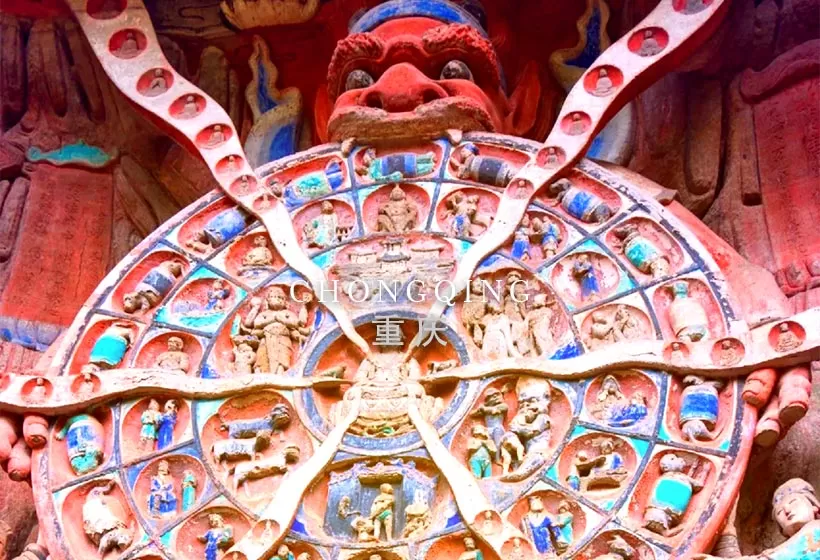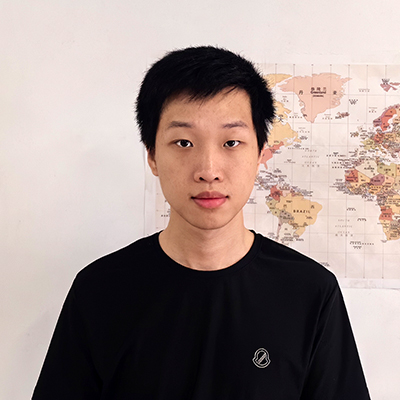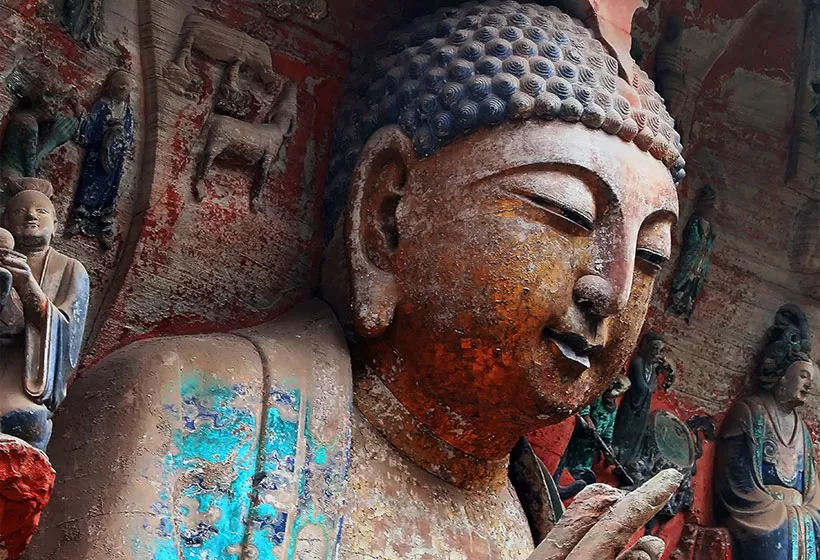Short Introduction to Chongqing Local Culture: History, Festival, etc.
Chongqing, abbreviated as "Yu" and also known as the "Mountain City" and the "River City" is located in southwest China. The city sits at the confluence of the Yangtze and Jialing rivers, with its urban area embraced by the two rivers on three sides and backed by mountains on the other, resembling a natural peninsula. Chongqing is not only the world's largest mountain-and-water city but also a famous historical and cultural city in China, as well as being celebrated both in China and internationally as the "Capital of Hot Springs".
As the birthplace of Bayu culture, Chongqing boasts a city history spanning over 3,000 years and has long been known as "Naturally Favored Chongqing". Its unique urban layout — with city walls built along the mountains, and houses rising in tiers according to the terrain by the rivers — had already taken shape as early as the Northern Wei period.
City of Mountains · Rivers · Fogs
In the western part of China hides a city — a mountain city, a river city, and a fog city. This is Chongqing, a city passed down by word of mouth and known far and wide.
Chongqing is called the "Mountain City" because the mountains and the city are one. To the north lies the Daba Mountains, to the east the Wushan Mountains, to the southeast the Wuling Mountains, and to the south the Dalou Mountains. The terrain is dominated by hills and mountains, with extensive sloping land, and features typical karst landscapes such as stone forests, peak clusters, caves, and gorges. The entire city is built along the mountains, rising and falling with the terrain, creating a uniquely three-dimensional urban landscape.
As the city clings to the mountains and is often shrouded in mist and clouds, it has earned the nickname "Fog City". In winter, thick fog often blankets the city, transforming it into a dreamlike wonderland. In summer, under the blazing sun, the mist lifts to reveal the city's true face — soaring mountain peaks and houses stacked along the slopes, each making one feel a beauty that is strikingly distinctive.
Chongqing is also known as a "River City" because of its location beside the rivers. Here, the Yangtze River and Jialing River converge, creating a magnificent waterscape. Whether it's the tranquil river in the early morning or the cool evening breezes, both bring a sense of peace and delight. In Chongqing, ancient buildings and modern skyscrapers stand side by side, painting a picturesque scene.
The mountains and rivers, mist and city, weave together in harmony, enhancing one another. The true beauty of Chongqing lies not only in its breathtaking natural scenery but also in its rich cultural atmosphere. From ancient times to the present, Chongqing has witnessed countless changes in history and carried innumerable stories — stories etched into every building and whispered through every alley and street corner.
Brief History
Around 2 million years ago, during the early Paleolithic Age, the earliest known humans in China — the Wushan Man — appeared in what is now Wushan County, Chongqing. During the Xia and Shang dynasties, this region was home to the ancient Baipu tribes. In the late Shang and early Zhou periods, the area's abundant salt resources gave rise to the Ba Kingdom civilization. After the Qin state conquered the Ba State, it stationed troops in Jiangzhou and built the city of Ba Prefecture, with its location near today's Chaotianmen in Yuzhong District, marking the recorded beginning of Chongqing as a city.
In 194 BC, during the Western Han Dynasty, Ba Prefecture was divided into three: Ba Prefecture, Baxi Prefecture, and Badong Prefecture. Hence, Chongqing came to be known as the "Land of Three Bas". In 222 AD, during the Shu Han period, the warlord Liu Bei entrusted his son to Zhuge Liang at Baidicheng in Badong Prefecture (now Fengjie County). In 583 AD, Emperor Wen of the Sui Dynasty named the region Yu Prefecture after the Yu River (the ancient name for the Jialing River) encircling the city, thus originating the abbreviated name "Yu" of Chongqing.
During the Southern Song Dynasty, Emperor Guangzong Zhao Dun was first titled Gong of Prince and later ascended to the throne. Proclaiming it a "double celebration", he renamed the area Chongqing Prefecture, giving the city its current name — which it has borne for over 800 years. In the final years of the Southern Song, when Mongol forces invaded from the north, national heroes like Peng Daya, Yu Jie, and Zhang Jue built a mountainous city defense system centered around Chongqing Prefecture, fiercely resisting the Mongols for decades and halting their world conquest at the time.
In 1891, during the Qing Dynasty, Chongqing was opened as a treaty port, becoming the first inland Chinese city to formally step onto the global stage. During the War of Resistance Against Japan, the Nationalist government relocated to Chongqing, transforming the small Yuzhong Peninsula into the wartime command center of the Far East for the global anti-fascist effort.
After the founding of the People's Republic of China, Chongqing entered a new era of development. It became a centrally administered municipality in 1954 and regained this status in 1997. Today, Chongqing has grown into a modern metropolis — not only a vital economic hub in southwestern China, but also a key link in the national Belt and Road Initiative and the Yangtze River Economic Belt.
Region Culture
Chongqing's culture primarily belongs to Bayu culture, which originated from Ba culture — a regional cultural tradition formed through the historical development of the Ba people and the ancient Ba State. Bayu culture is one of the most distinctive ethnic cultures in the upper reaches of the Yangtze River. The Ba people, who lived amid towering mountains and great rivers, were shaped by nature's influence and a rugged environment, fostering a character known for resilience, tenacity, and boldness. As a result, the Ba people earned a reputation for bravery and skill in battle.
In ancient times, Chongqing was geographically isolated, with rugged roads and a humid, hot climate. This environment gave rise to a way of life and customs with distinctly unique characteristics: straightforward yet slightly reckless, enthusiastic yet somewhat cunning, humorous with a touch of rusticity, serious but laced with wit, leisurely yet prone to impatience, tolerant yet occasionally exclusive. Chongqing's vibrant local operas, folk arts, painting, handicrafts, and traditional community festivals vividly reflect the customs and folk spirit of Bayu culture.
Bayu culture is centered in Chongqing and encompasses the cultural heritage of the eastern Sichuan Basin. Its scope extends beyond the ancient history of the Ba State, the Ba people, and Ba Commandery to include the broader historical and cultural traditions of the region, spanning from the pre-Qin period to the Ming and Qing dynasties, with Chongqing at its heart.
Ethnic Minority
As one of China's multi-ethnic regions, Chongqing is home to a rich tapestry of ethnic minority groups. Out of China's 56 recognized ethnic groups, 55 can be found in Chongqing alone.
The Tujia people are Chongqing's largest ethnic minority, primarily residing in areas such as Qianjiang and Pengshui. Tujia culture is rich and diverse, with numerous forms of artistic expression marked by distinct styles. During collective labor, the Tujia created a form of singing accompanied by gongs and drums. The Baishou Dance, an ancient practiced Tujia folk dance, features lively rhythms and simple, unpretentious movements.
The notable architectural hallmark of the Tujia is the stilted houses. These traditional wooden dwellings are built with the main hall grounded on solid land, while the side rooms are connected on one side and supported by stilts on the remaining sides, leaving them suspended above the ground.
The Miao people is Chongqing's second-largest ethnic group, predominantly inhabiting the southeastern counties of Xiushan, Qianjiang, Youyang, and Pengshui, in which Pengshui boasts the largest Miao population in China and carries the title of the "Miao Hometown of the World". Renowned for their love of music and dance, the Miao's songs are bold, spirited, and resonate through the mountain valleys.
The Miao have no written script of their own, and much of their history and culture has been preserved through intricate Miao embroidery. Their clothing is vibrant and colorful, with elaborate patterns that reflect strong ethnic characteristics.
The Hui people mainly reside in Yuzhong, Shapingba, and Rongchang, living in close-knit communities and practicing Islam. The Hui Cemetery in Chongqing bears witness to the Hui people's migration and settlement. Interestingly, the now-famous Chongqing hotpot was originally created by Hui butchers working at Chaotianmen, where the Yangtze and Jialing rivers meet.
The Yi people have traditionally lived in Qijiang District. Along with the Miao, both groups are historically migratory and have long coexisted in neighboring villages. Over time, they have influenced each other's customs, religious beliefs, production methods, and daily habits. Yi dances are particularly unique, capturing the fervent, unrestrained spirit of the Yi people and their love for life.
Special Festivals
The Ciqikou Temple Fair is traditionally held on the 1st and 15th days of the lunar month, as well as on other significant days such as the birthday of Shakyamuni Buddha and the birthday of the Bodhisattva Guanyin. Main activities include burning incense, praying to Buddha, making wishes or redeeming vows, monks or temple hosts chanting scriptures and conducting rituals, and enjoying vegetarian meals. During these temple fairs at Baolun Temple and Fenghuangshan Temple in Ciqikou, thousands of devotees gather, along with numerous visitors and tourists.
The Dazu Baoding Incense Fair Festival takes place at Baoding Mountain in Dazu every year, typically spanning about 40–50 days from mid-first lunar month to early third lunar month. The busiest days for pilgrimages to the mountain are the 1st, 15th, and 19th days of the second lunar month, drawing especially large crowds. Although originally a Buddhist ritual gathering, the Baoding Incense Fair has since evolved into a fusion of religious ceremonies, tourism, folk entertainment, and local trade.
The Ghost City Temple Fair centers around the folk incense-offering gatherings on Ming Mountain and takes place annually on the 3rd day of the third lunar month. During the fair, candles light up the streets of Fengdu, and colorful flags flutter in the breeze. Ming Mountain and Shuanggui Mountain glow with a sea of lanterns amidst swirling incense smoke. Various folk performances like square dances, street shows, and stage plays, fill the city with a mystical, festive atmosphere that captivates visitors.
The Ganqiu Festival is an annual traditional celebration of the Miao ethnic group, held on the Start of Autumn. On this day, Miao villagers from surrounding mountain hamlets dress in their finest festival attire and flock to the event grounds, with the sound of gongs and drums, and songs linger in the air. Festivities include swinging, knife ladder climbing, lion dances, dragon lantern, and singing competitions. Young men and women take this opportunity to court through song, showcasing their vocal talents.
Diet Style
Chongqing cuisine, also known as Yu cuisine, is featured by its distinctive flavors, with a particular emphasis on spiciness, numbness, freshness, tenderness, and burning sensation. Through skillful and varied techniques, it has developed into a style where every dish offers its own unique taste, earning widespread popularity.
The food culture of the Bayu region is especially known for its bold, intense flavors. Yu-style Sichuan cuisine places great importance on seasoning, with over 20 common flavor profiles such as numbing-spicy, fish-fragrant, and strange-taste, among which the numbing-spicy flavor is the most dominant. Influenced by the humid and chilly local climate, Chongqing people long ago developed a preference for spicy and oily dishes to dispel cold and moisture from the body. As early as the Tang and Song dynasties, the region has created distinctive pastries noted for their rich sugar and oil content.
Today, the most defining elements of Chongqing's everyday flavors can be summed up in five words: numbing, spicy, fresh, tender, and burning. Because of their accustomed bold flavors, Chongqing natives often find it difficult to adapt to milder cuisines when traveling or living elsewhere, commonly feeling that other regional dishes lack the spice, numbness, and freshness needed to awaken the appetite.
Thanks to Chongqing's mountainous riverside setting, convenient transportation, and influx of people from various regions, Chongqing's culinary scene is known for drawing on the strengths of other regional cuisines while daring to innovate and cater to a wide range of tastes. Another distinct feature of Chongqing dining culture is jianghu cuisine — dishes rich in local flavor and rustic Sichuan character.
In culinary terms, jianghu cuisine refers to food styles that exist outside the confines of orthodox or formal dishes. Rooted in folk traditions, it takes classic Sichuan cuisine as a foundation, borrowing freely from various schools of cooking while breaking convention. It incorporates techniques like reimagining traditional recipes, blending Chinese and Western cooking, or mixing northern ingredients with southern flavors. While it may appear casual or spontaneous, jianghu cuisine often yields unexpectedly brilliant results. Its most defining traits are its earthy, roughness, and hybridity.
Cultural Heritage
In Chongqing, every historical relic bears the city's indelible mark, and every traditional craft flows with the soul of Bayu culture. Strolling through the Dazu Rock Carvings, the final monumental chapter in the world's grotto art history, one finds the solemnity of Buddha figures intertwined with the everyday life of ancient townsfolk. Standing atop Baidicheng, one can still sense the light-hearted boat ride of Li Bai and the melancholy verses of Du Fu echoing through the roaring waves of Qutang Gorge. Exploring the secretive 816 Project reveals a hidden yet awe-inspiring chapter of history, its labyrinthine tunnels leaving visitors speechless. The ancient battlefield ruins of Diaoyu Fortress and the underwater stone tablet forest at Baiheliang blend the weight of history with the marvels of nature, quietly telling stories of Chongqing's resilience and wisdom.
Chongqing's intangible cultural heritage is the city's living heartbeat. In the early morning alleys, a bowl of numbing, spicy, and aromatic Chongqing noodles awakens both taste buds and the fiery spirit of the mountain city's people. Along the riverbanks, the River Shanty of boatmen still resonate with the grandeur of the Yangtze. In the opening and closing of a Rongchang folding fan lies the ingenuity of craftsmen and the elegance of passing time. The fluttering threads of Shu embroidery weave the colors of Ba mountains and Yu waters and the perseverance of the inheritors.
GREAT FAMILY CHINA TOUR
JULY 2024 We wanted to thank Grace at China Culture tour for organizing a great tour of China. We enjoyed our Beijing - Xian-Chengdu -Guilin -Yangshuo - Shanghai trip. Our local guides Bruce in Beijing, Susan in Xian, Jane in Chengdu, Mike in Guilin and Mary in Shanghai took care of us…read more details »
Teng Han L from SINGAPORE
Ready to Create a Unique Dream Travel?


